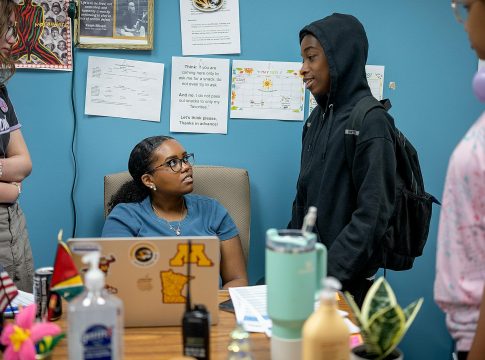Addressing Mental Health Needs in Schools: A Cautious Approach
As schools grapple with the rising demand for mental health support, programs like the Youth Mental Health Corps have emerged, aiming to address significant gaps in resources for young people. However, while the intention behind these initiatives is commendable, it is essential to approach this model with caution and critical reflection.
Understanding the Context
The Youth Mental Health Corps was created in response to the urgent need for mental health services among students. With many schools facing staff shortages, particularly in social work and counseling, there is a growing interest in recruiting young adults who can contribute positively to the mental wellness of their peers. Participants often arrive with a sense of passion and a desire to help, which is heartening.
However, experts like Sydney Piras, chair-elect of the Minnesota School Counselor Association, highlight a crucial concern: effective mental health support requires proper training and knowledge of best practices. While many corps members are eager to serve, their limited training could lead to complications in sensitive situations.
The Need for Comprehensive Training
Currently, the training provided to members of the Youth Mental Health Corps varies significantly. Some initiatives, like the AmeriCorps Recovery Corps, offer extensive training—over 40 hours—before participants begin their work with individuals facing mental health and substance use challenges. This robust training helps prepare members to offer meaningful support to others, particularly during vulnerable moments.
However, it’s important to acknowledge that not all programs have the same level of training. For instance, the AmeriCorps Promise Fellows engage in an eight-hour mental health first aid certification, equipping them with basic tools to recognize when a student may be struggling and the best ways to offer help.
A Balanced Perspective
While the Corps offers a promising avenue for improving mental health access, it is vital to consider the complexities involved. Many who join the program may have personal experiences related to mental health or recovery and wish to guide others. Being in a stable place oneself is a critical aspect when taking on such a responsibility.
Considerations for Individuals Involved
For school staff and administrators thinking about integrating corps members into their environments, several points should be kept in mind:
- Value of Training: Supporting the development of comprehensive training programs will enrich the program’s effectiveness.
- Clear Boundaries: Establishing guidelines for corps members’ roles can prevent misunderstandings and ensure everyone’s safety and well-being.
- Ongoing Support: Providing continuous resources and supervision can help corps members navigate the challenges they might face.
Conclusion: A Path Forward
As schools explore innovative ways to support their students, an emphasis on proper training and a responsible integration of these passionate individuals is essential. Mental health care is a delicate field, and while the willingness to help is vital, it must be paired with appropriate training and professional oversight.
By fostering an environment where the mental health needs of students are met with qualified support, we can cultivate resilience and promote wellness for future generations. The journey toward comprehensive mental health care in schools is ongoing, and thoughtful dialogue will be the cornerstone of its success.

Covers wellness, nutrition, mental health, and daily life tips.
Bio: Talia brings a background in health journalism and holistic living to help readers live better, one tip at a time.

